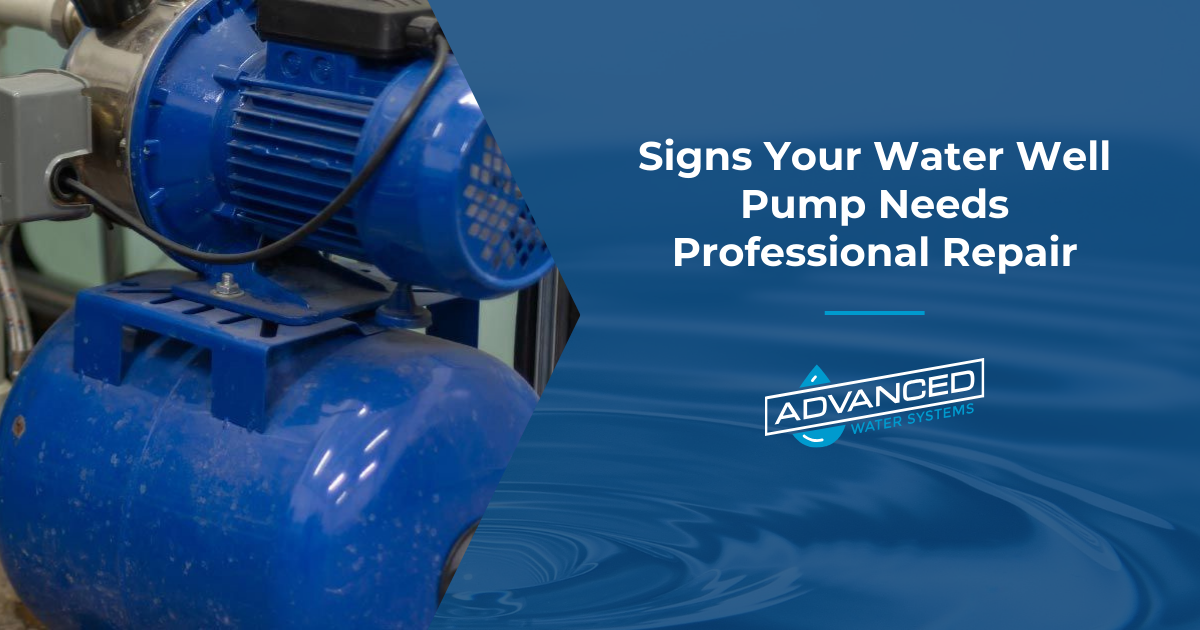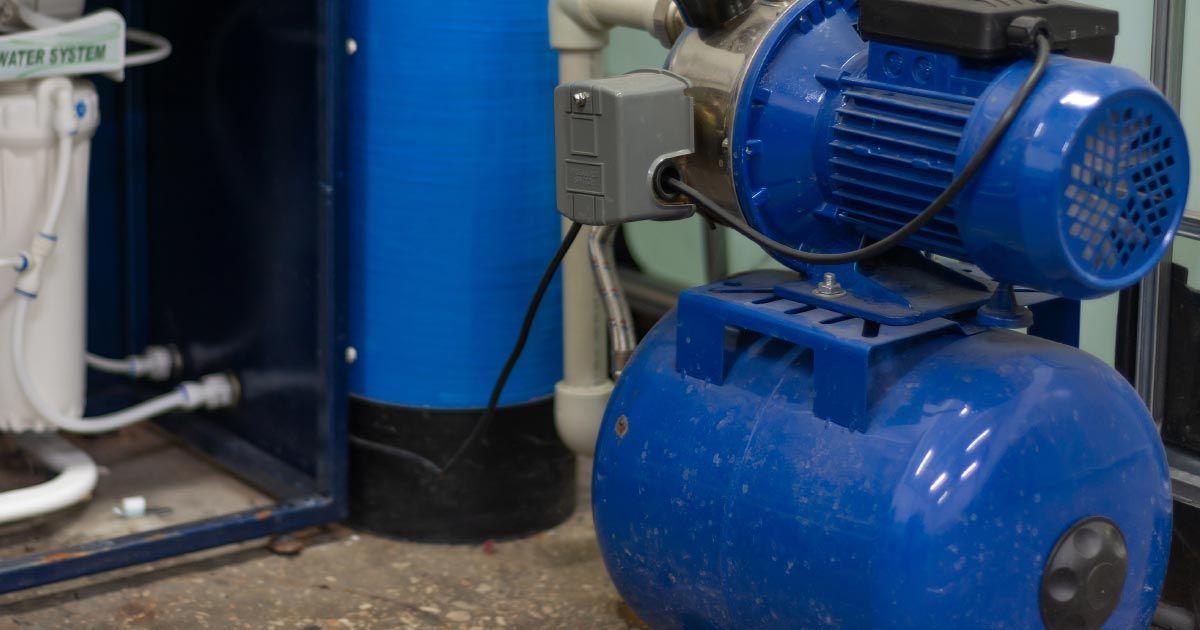
Owning a water well gives you a reliable and independent water source for your home. With that independence comes responsibility, especially when it comes to keeping your water well pump in good working order. Your well pump is the heart of your system; it makes sure water flows from your well to your faucets. Like any machine, it can start to show signs of wear over time. The trick is to catch those signs early before they turn into bigger, more expensive problems.
Here are some of the common water well pump issues I frequently see:
- Decreased water pressure
- Frequent cycling
- No water or dry well
- Unusual noises
- Discolored or dirty water
- High energy bills
- Pressure tank issues
- Increased sediment in the water
In this article, we’ll discuss some common signs that your water well pump might be crying out for help. By paying attention to these hints, you can avoid water disruptions and keep your household running smoothly.
Decreased Water Pressure
Let’s start with something you might notice right away – low water pressure. Imagine hopping into the shower only to find that the water’s barely trickling out. Once you’ve checked that someone hasn’t started laundry and the dishwasher while also flushing one or more toilets, you should know that this could be a sign that your well pump isn’t working as well as it should be.
There are a few culprits that could be at play here:
- Aging Pump: Like all things, pumps can slow down with age, which makes it harder to push water with the same oomph.
- Clogged Filters: Over time, sediment can build up in your system, which clogs filters and makes it tough for water to flow freely.
- Pressure Tank Problems: Sometimes, the issue isn’t with the pump but the pressure tank. A waterlogged tank can cause inconsistent water pressure throughout your home.
To figure out if the pressure drop is just a one-off or something more serious, try turning on a couple of faucets at once. If the weak flow is everywhere, it’s probably time to call in a pro to check out your pump or pressure tank.
Frequent Cycling
Have you ever noticed your well pump turning on and off more often than it used to? This is known as short cycling, and it’s not something you want to ignore. Normally, your pump should kick in when water is needed and then take a break. But if it’s short cycling, it will be turning off and then turning on again within a few seconds or minutes.
Here’s what might be causing it:
- Pressure Switch Issues: A faulty pressure switch can make your pump act like it’s on a roller coaster, turning on and off at random.
- Waterlogged Pressure Tank: If your pressure tank is waterlogged, your pump might start short cycling as it struggles to keep up.
- Leaks: Leaks in your plumbing or well system can also cause the pump to work overtime, trying to make up for lost water.
Short cycling isn’t just annoying; it’s also bad for your pump’s health. It can lead to early burnout, which means more repairs or even a costly and inconvenient replacement. Better to get it looked at sooner rather than later.

No Water or Dry Well
Nothing’s more alarming than turning on the tap and finding… nothing. If your pump is running, but there’s no water, it’s a big red flag that you need service immediately.
Here’s what might be going on:
- Dry Well: In some cases, your well might have run dry, especially during a drought or if you’ve been using a lot of water lately.
- Pump Malfunction: Sometimes, the pump itself is the problem. If it’s worn out or broken, it might not be able to draw water, even if your well is still full.
- Blockages: Debris and sediment can get stuck in the system, blocking the water from getting to where it needs to go.
Before you panic, check for a simple explanation, like a power outage. Look at your circuit panel, and see if the switches controlling the well pump are flipped on, and make sure nothing has tripped. If that’s not the case and you aren’t in a drought or haven’t recently filled up your swimming pool with well water, it’s time to call in a specialist to diagnose and fix the problem.
Unusual Noises
A well pump in good shape shouldn’t be too noisy. You might hear a mechanical sound if you go outside and listen, but you shouldn’t hear anything loud enough that you notice it in the house or even in another part of your yard. If you start hearing strange sounds, like banging, grinding, or whining, it’s time to investigate.
Here are a few things that could be causing those noises:
- Worn Bearings: The bearings inside your pump can wear out over time, which might lead to grinding or whining sounds.
- Air in the System: If there’s air trapped in your well system, you might hear banging or knocking noises as the pump works.
- Debris in the Pump: Sometimes, sediment or debris can get into the pump, making it struggle and causing unusual sounds.
Don’t ignore these sounds. They’re often the first sign of mechanical issues that can lead to pump failure if left unchecked. A quick call to a professional can save you from bigger headaches down the road.
Discolored or Dirty Water
If you notice that your water has taken on an unusual color or looks rusty or muddy, it’s a sign that something’s wrong. The City of Belmead, TX suggests running your water for a few minutes to see if it’s still discolored. If it is, get in touch with a professional.
Here’s what could be causing the discoloration:
- Sediment Buildup: Over time, sediment can accumulate in your well, leading to dirty water.
- Worn Pump Components: Parts inside your pump can wear down, allowing dirt or rust to seep into your water supply.
- Well Casing Damage: If there’s a crack or damage in the well casing, contaminants can make their way into your water.
Discolored water isn’t just unpleasant; it can also be a health concern. If you notice this issue, it’s important to have your well system inspected by a professional to figure out what’s going on.
High Energy Bills
Have you noticed your electricity bill is higher for no apparent reason? While there are many electrical issues that could be causing it, one possibility is that your well pump is working harder than it should.
Here’s why this might happen:
- Overworked Pump: If your pump is struggling to maintain pressure, it might be running more often, using up more energy.
- Mechanical Issues: Worn-out components can make the pump inefficient, causing it to use more power.
- Continuous Running: Sometimes, a pump doesn’t know when to quit and keeps running even when it shouldn’t, leading to higher energy bills.
If your energy costs have spiked, it’s a good idea to have your pump checked out. Catching the issue early can save you money and extend the life of your equipment.
Pressure Tank Issues
Your pressure tank plays a big role in keeping water pressure steady in your home. If it’s not working right, you’ll likely notice it.
Here’s what to look for:
- Waterlogged Tank: A pressure tank full of water won’t function properly, leading to pressure problems.
- Visible Damage: If the tank looks dented, rusted, or damaged, it might not be doing its job.
- Pressure Gauge Fluctuations: If the pressure gauge on the tank is constantly moving, it could signal a problem with the tank or pump.
Issues with the pressure tank are often linked to pump problems, so it’s a good idea to have both checked out if you notice anything off.
Increased Sediment in Water
If you’re finding more sediment or debris in your water than usual, something might be up with your pump or the well itself.
Here’s what might be causing it:
- Failing Pump: A pump that’s on its last legs might not filter out sediment as well as it should, letting more debris into your water.
- Well Contamination: Cracks or damage to the well casing can allow sediment to enter the water supply.
- Changes in Water Table: If the water table has dropped, the pump might be drawing in sediment from the bottom of the well.
Ignoring sediment issues can lead to bigger problems, like clogged plumbing and damaged appliances. If you notice more sediment in your water, it’s time to call in a professional.
Conclusion
Taking care of your water well pump is key to ensuring a steady, clean water supply for your home. By keeping an eye out for signs, like low water pressure, frequent cycling, or unusual noises, you can catch issues early and avoid costly repairs. Remember, a small problem can quickly turn into a big one if left unchecked, so don’t hesitate to call a well pump technician if something seems off. Your well pump works hard for you – make sure it gets the attention it needs to keep doing its job.

